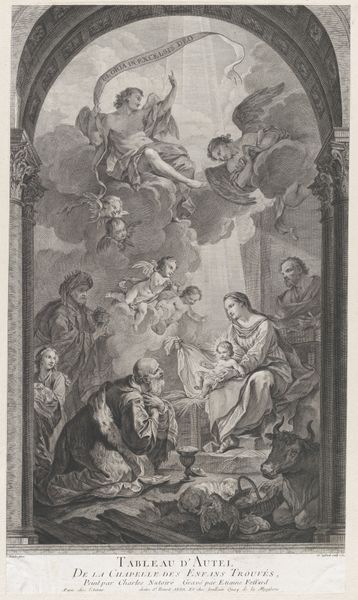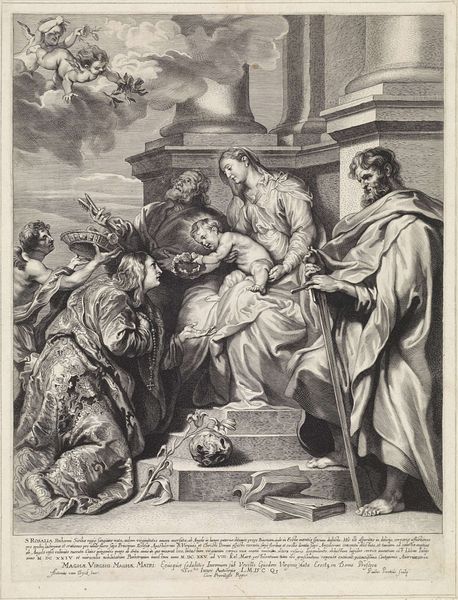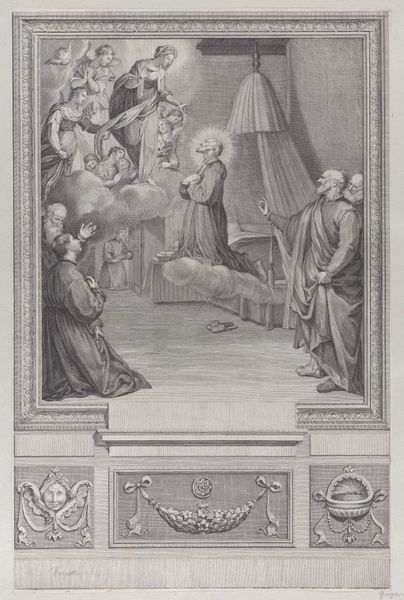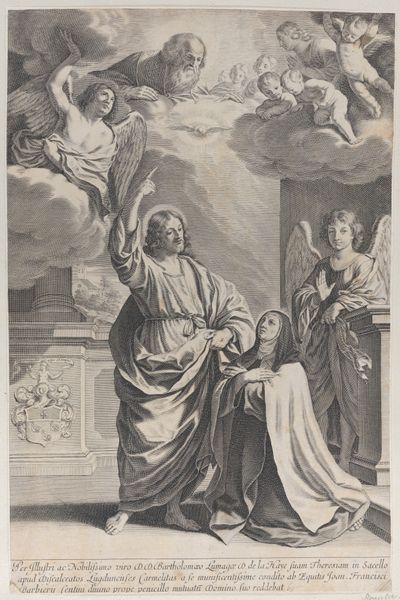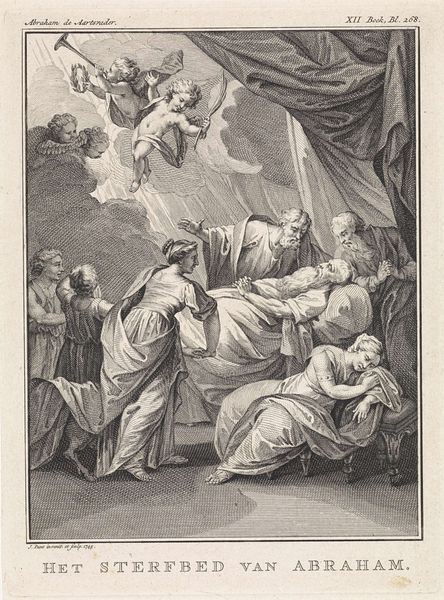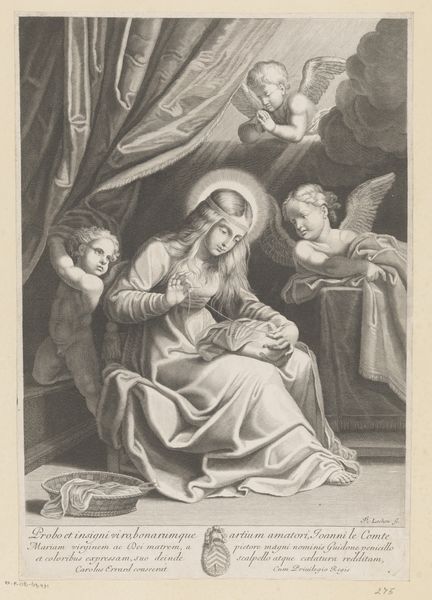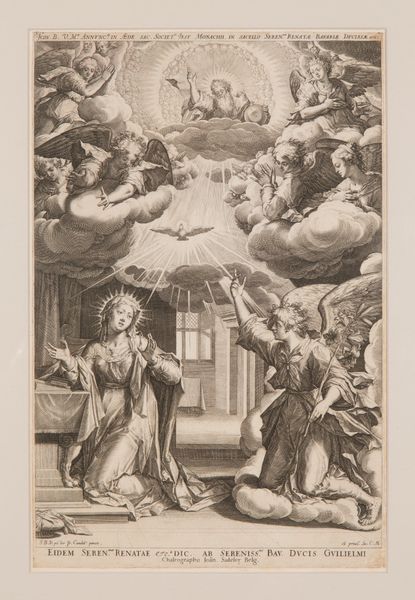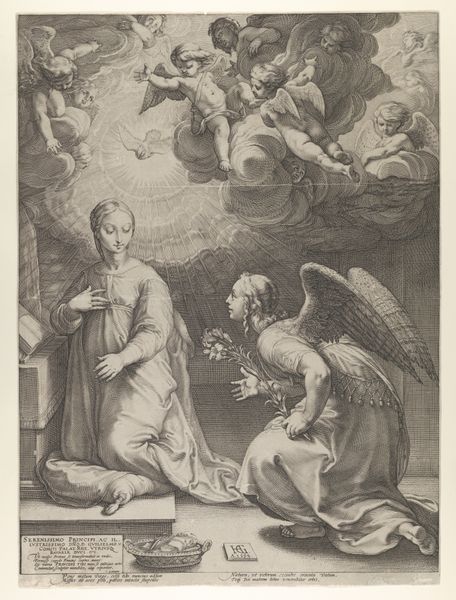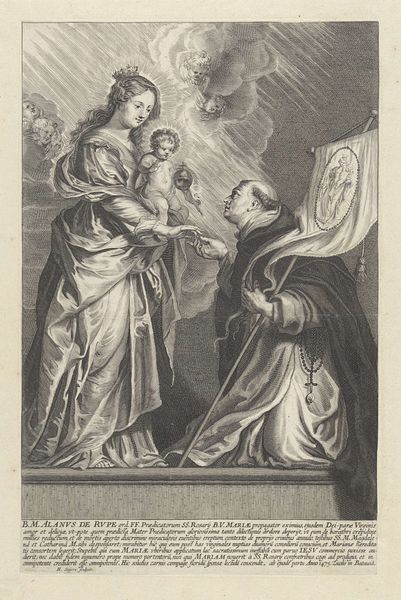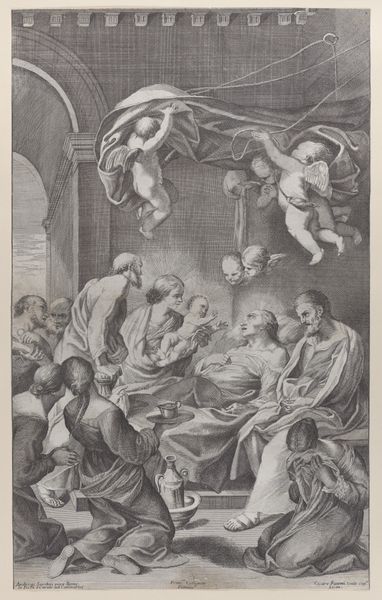
The Death of Saint Andrea Avellino in the presence of Saint Aloysius Gonzaga and Saint Stanislaus Kostka 1725 - 1780
0:00
0:00
drawing, print, engraving
#
portrait
#
drawing
#
baroque
# print
#
figuration
#
history-painting
#
engraving
Dimensions: Sheet (Trimmed): 16 1/4 × 11 5/8 in. (41.2 × 29.6 cm)
Copyright: Public Domain
Curator: Joseph Wagner gives us “The Death of Saint Andrea Avellino in the presence of Saint Aloysius Gonzaga and Saint Stanislaus Kostka." The work probably dates between 1725 and 1780. What strikes you first? Editor: The engraving's tonal range is impressive. Wagner coaxes so much drama out of simple black and white. Death as high theater! All the billowing fabrics. It is certainly an eye-catching way of celebrating piety and mortality! Curator: Exactly. Wagner presents Avellino's death not as a stark ending, but as a moment brimming with spiritual significance, as witnessed by other saints and, dare I say, angels in attendance. Editor: Sure, I see them as observers, but who exactly made this engraving? Was it Wagner alone, toiling over the plate, or were there assistants? What were the workshop conditions like? These prints existed for mass consumption. Did the buyers consider all the labor? Curator: Ah, you ground it in the practical! It’s interesting to consider that, especially when the final image seems so ethereal. Still, look how the artist employs hatching and cross-hatching. The sheer amount of physical work suggests devotion, an offering of sorts. Don’t you think the way light filters, catching the edges of fabric and illuminating faces, brings something heavenly to it? Editor: The contrast serves the Baroque style. But even that is an act of manufacture! The stark lighting had to be conceptualized. Where did Wagner see light work this way? The lines and tonal contrasts also direct the gaze, another designed and labored act. The theatrics of martyrdom, produced by careful choices of material means! Curator: And doesn't that artifice itself, that deliberate staging, serve a greater purpose? To elevate the mundane into the divine, through artistry but also with skilled execution? We aren't seeing bare flesh here. But rich textiles meant to adorn God, and man's sacred purpose. Editor: Precisely! The image reveals how art—and religious art, at that— functions as a crafted, designed experience, relying on earthly means to depict otherworldly events, engaging materials, skill, labor. Wagner gives form to this. The rest of us just see the face value... or maybe it's the base materials after all. Curator: I see your point about artistic and commercial production, as always. Yet Wagner allows us a space to ponder what lingers when life's materials fail us. To each their perspective.
Comments
No comments
Be the first to comment and join the conversation on the ultimate creative platform.
